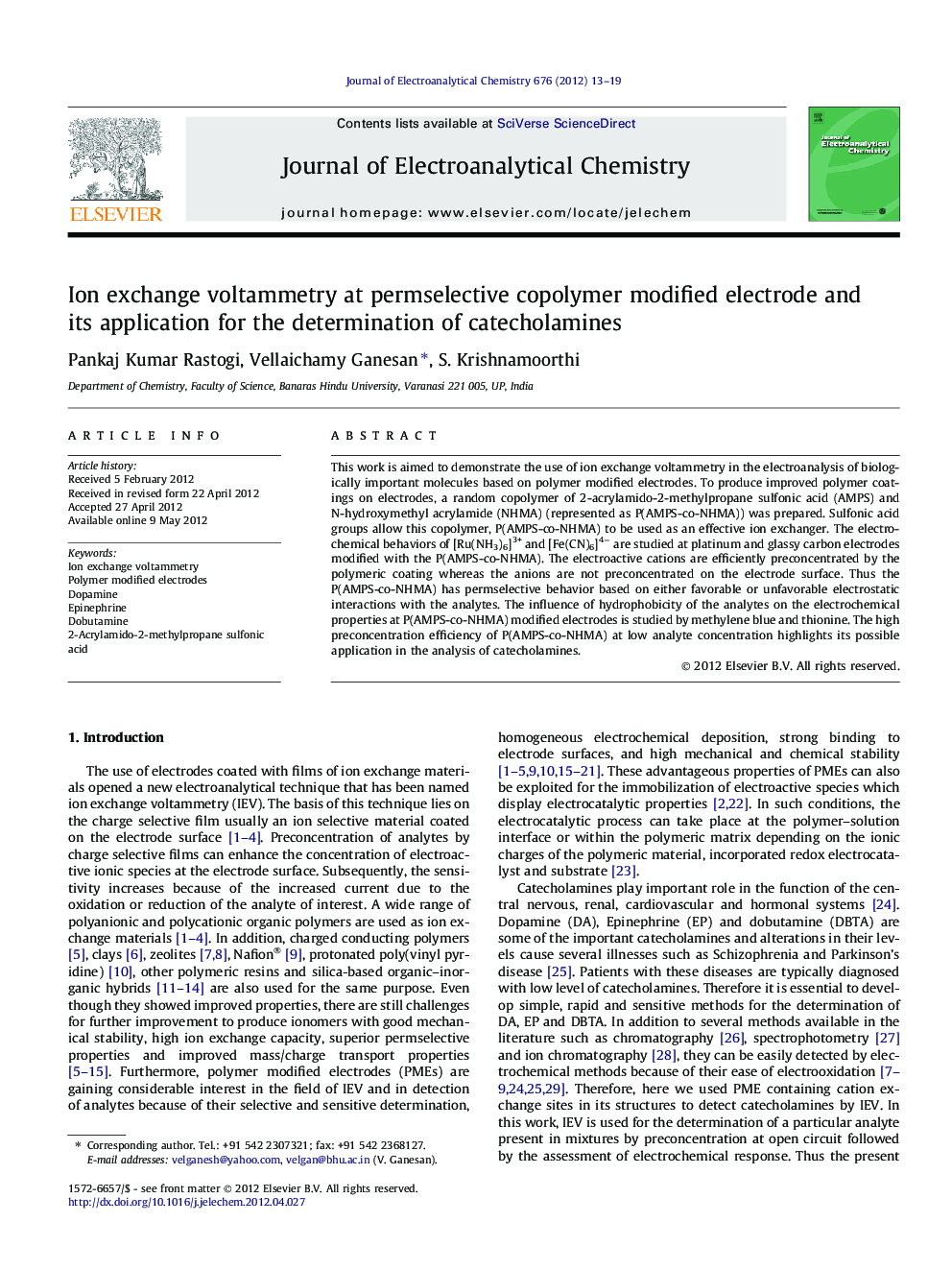| Article ID | Journal | Published Year | Pages | File Type |
|---|---|---|---|---|
| 219309 | Journal of Electroanalytical Chemistry | 2012 | 7 Pages |
This work is aimed to demonstrate the use of ion exchange voltammetry in the electroanalysis of biologically important molecules based on polymer modified electrodes. To produce improved polymer coatings on electrodes, a random copolymer of 2-acrylamido-2-methylpropane sulfonic acid (AMPS) and N-hydroxymethyl acrylamide (NHMA) (represented as P(AMPS-co-NHMA)) was prepared. Sulfonic acid groups allow this copolymer, P(AMPS-co-NHMA) to be used as an effective ion exchanger. The electrochemical behaviors of [Ru(NH3)6]3+ and [Fe(CN)6]4− are studied at platinum and glassy carbon electrodes modified with the P(AMPS-co-NHMA). The electroactive cations are efficiently preconcentrated by the polymeric coating whereas the anions are not preconcentrated on the electrode surface. Thus the P(AMPS-co-NHMA) has permselective behavior based on either favorable or unfavorable electrostatic interactions with the analytes. The influence of hydrophobicity of the analytes on the electrochemical properties at P(AMPS-co-NHMA) modified electrodes is studied by methylene blue and thionine. The high preconcentration efficiency of P(AMPS-co-NHMA) at low analyte concentration highlights its possible application in the analysis of catecholamines.
Graphical abstractFigure optionsDownload full-size imageDownload as PowerPoint slideHighlights► A new copolymer is prepared and utilized in ion exchange voltammetry (IEV). ► The new polymer on electrode surface exhibited permselective properties. ► IEV is employed for the selective determination of a particular analyte in a mixture. ► Hydrophobicity of the film and the analyte plays important role in IEV.
